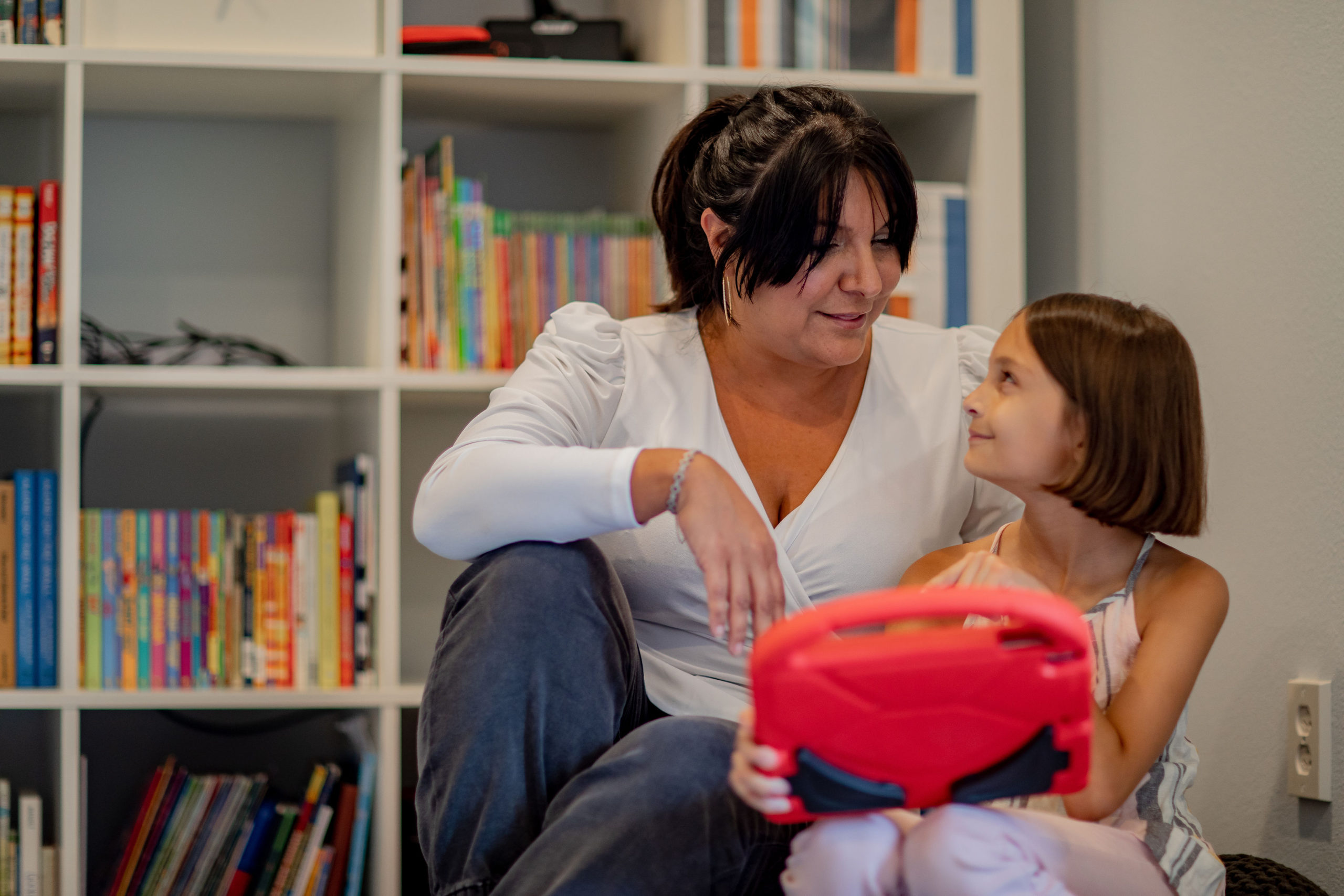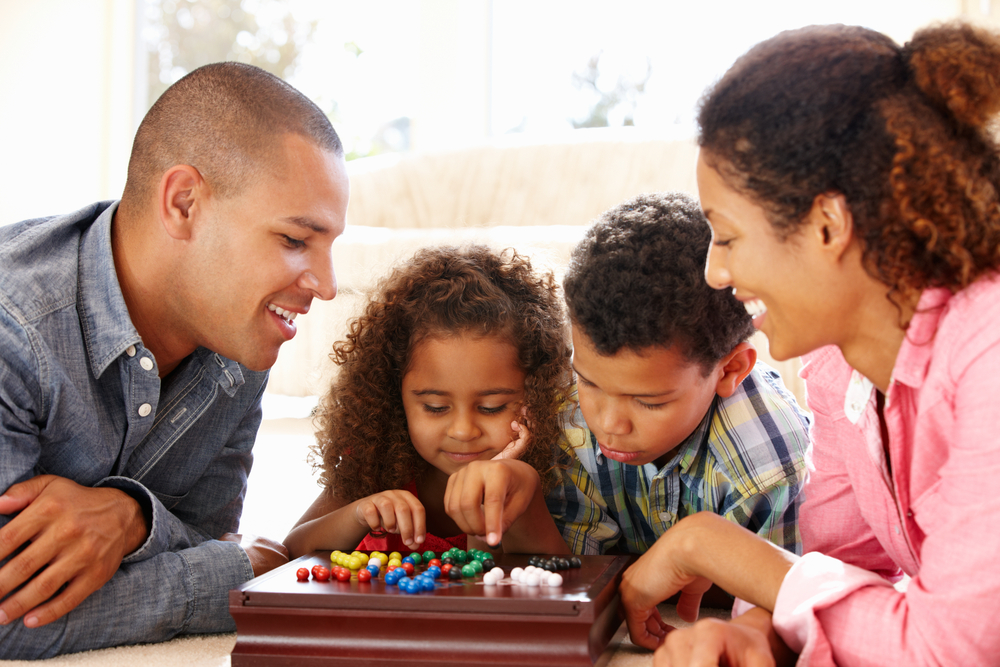Kinjo’s Cognitive Challenge Score (and why you need it in your life!)
Kids love to play. They’re born ready to explore, discover, and learn. They’re constantly seeking out new experiences and testing limits (sometimes frustratingly so). And this play translates into learning naturally.
What do you picture when you think of children playing? Is it unstructured, outdoor time — climbing trees and digging in the dirt? Or maybe building with Legos or racing Hot Wheels? Perhaps it’s make-believe dress-up time with their favorite stuffies?

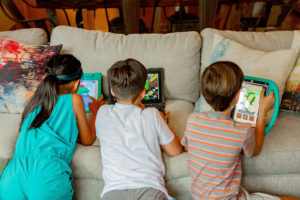
But what about when their play looks like Roblox and video games?
While video games may feel like wasted time, they’re actually a productive way to play and learn. And with Kinjo’s Cognitive Challenge Score, you and your child can track the learning in their gameplay like never before!
Why kids love video games
Kids crave challenge, and video games provide it like nothing else.
Games are designed to be learn-as-you-go. You start with a tutorial. Then once that’s mastered, you move into more advanced gameplay. If an objective is too advanced, you take time to level up and then revisit it.
The best video games are structured while still being open for exploration. And they’re challenging at exactly the level they need. They can move at their own pace through a story, tackling it in the best way for them. And they experience a big feeling of accomplishment when all of their time spent leveling up pays off.
This is why so many educational apps have started incorporating gamified learning concepts. But your kiddo doesn’t need only “educational” apps to learn. There is plenty of learning to be found in the many games on Roblox. And when you pair Roblox with Kinjo, you unlock the power of learnified gaming.
How Kinjo brings more learning to Roblox
Learnified gaming helps you find the educational aspects of video games designed for entertainment and fun. Whether you’re looking at math skills needed to solve puzzles or improving social skills to navigate a co-op game with friends, video games are full of learning moments.
And now Kinjo can help you measure the learning found in your child’s Roblox time!
How Kinjo created the Cognitive Challenge Score
Kinjo learning and gaming experts spend hours reviewing Roblox games (aka experiences) and then rate the amount of challenge found in each one.
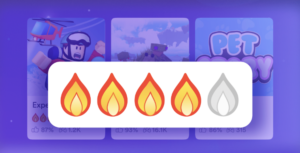
Some games carry a lot of challenge by incorporating many different game mechanics and decision-making. Others keep it more simple. And some games don’t make the Kinjo cut at all.
Once the games are reviewed and rated (on a scale of 🔥 to 🔥🔥🔥🔥🔥 — you can read more about Kinjo’s flame levels here), then they’re recommended to your child.
And what happens next determines your kiddo’s Cognitive Challenge Score.
Kinjo’s 5 Levels of Challenge
To help you and your child measure their gaming choices, Kinjo has developed a Challenge Meter that corresponds with the amount of learning potential available during their game time. It works like a speedometer, moving up and down throughout the day based on the games they choose to play.
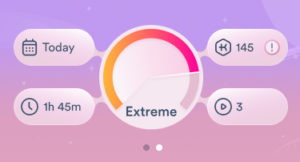
Kinjo’s 5 Levels of Challenge rated on their gaming speedometer are:
- Easy
- Medium
- Hard
- Extreme
- Epic
But how does Kinjo determine where they land on the challenge meter? Let’s break it down.
Kinjo encourages better gaming, not more gaming
The most important thing to note — your child’s Cognitive Challenge Score does NOT increase based on how much time they spend gaming. We’re not trying to encourage more screen time, but rather better screen time.
Kinjo looks at the percentage of time they spend gaming in each level. If they’re spending most of their time in non-Kinjo reviewed games, or in only 🔥 games, then they will fall lower on the challenge meter.
But, if they choose Kinjo-recommended games with varying challenge levels, and spend a larger percentage of their game time in the more challenging games, then their meter will go up. Kinjo looks at their overall game time for the day. And where they end up determines the amount of reward they earn (that’s why today’s coins are awarded tomorrow).
To sum it all up: more flames = more challenge = more opportunities for learning!
What’s your child’s Cognitive Challenge Score?
The only way to discover your child’s average Cognitive Challenge Score is to sign them up for Kinjo. Their score is a unique algorithm developed by game and learning experts to maximize your child’s game time.
But once you get their score, you may still be wondering how it breaks down. What exactly does their meter level mean? And how can they improve it?
First, it’s important to remember that every child is different (we know you know this, but it never hurts to have a reminder). They all have different strengths, gaming backgrounds, and interests. That’s why Roblox is so great — there’s something for every level!
And, even though it’s tempting to analyze the details of a single day, we’ve found that it’s best to look at your child’s progress over the course of a week or even a month. We all have those times where our motivation runs low. Or other times when we just need a brain break.
Your kids experience those same moments. So, if they choose to hang out in the Easy range for a couple of days, don’t stress. Instead, take a look back at what they were doing before. You’ll likely see they were tackling a new skill or gaming challenge just before taking their “break.”
So, with all that in mind, here’s what a child’s day could look like at each level.
Easy
Kids that land in “Easy” tend to switch frequently between games. They’ll spend a few minutes in one, then jump to something else that interests them.
And most of the games “easy” kiddos are playing also rate lower on complexity — falling between 1 to 2 flames of challenge. Or they may not be Kinjo-recommended games at all.
If your child starts their Kinjo journey here, don’t fret. These games are still valuable for younger children who are new to gaming and exploring different game genres, mechanics, and preferences.
These games often have simple instructions and mechanics, allowing children to experience success quickly while building up their gaming confidence. An “Easy” level is perfect for children aged 5-7 or for those who are new to gaming.
Medium
Children that land in the “Medium” category tend to stick to games they’re familiar with. They also gravitate to the most popular games on Roblox — ones with large followings they may have seen others playing on YouTube.
The “medium” kiddo’s data is often a mix of playing games with friends and exploring new games. Their games have a slightly higher level of complexity than those in the easy category — because more social games prioritize mechanics that encourage cooperation among players. These social, multi-player games focus on building large communities and experiences best done with friends.
While children at the Medium level may not be seeking out the most challenging games, they’re still developing important skills. The teamwork and collaboration needed in these games will serve them well in the more complex games to come.
Hard
When your child lands in the “Hard” level, you can bet they have a few favorite games where they spend most of their time.
Most of these games fall in the tycoon or action categories, requiring more focus and attention during gameplay. And while there is a learning curve (that can feel discouraging to young or new gamers), games played at this level are highly rewarding and engaging.
Because these games require more focus, they also encourage more problem-solving and critical thinking. For example — in a tycoon game, players must balance their resources to maximize profits and customer satisfaction. Or, while in an action game, they must use strategic thinking to defeat enemies and complete objectives.
Children may stay at the “hard” level for a while. They enjoy the higher challenge, but also are still looking for the instant dopamine hit these games provide. But as their skills continue to improve, they’ll begin to look elsewhere for more challenging experiences.
Extreme and Epic
If your child’s speedometer lands in the Extreme to Epic range, they’re driven by a desire for more challenge. These gamers gravitate towards experiences that require a high level of skill and dedication to master. And these challenge-seeking kiddos are willing to invest the time and effort needed to improve and grow.
These kids tend to be goal-oriented. They see progress as a measure of their success and achievement. Children in this range usually stick to only Kinjo-recommended games, helping them rank higher.
And the best part — games in this range often require players to think outside the box, developing unique strategies to overcome obstacles and challenges. As a result, gamers at this level can develop advanced problem-solving and critical-thinking skills that can be applied across many areas of their lives.
And remember —
Kinjo’s Cognitive Challenge Score is not a measure of your child’s abilities or aptitude. We know every kid has different strengths and interests, and we want to encourage your child to find and follow theirs.
Instead, the Cognitive Challenge gauge is looking at the challenge level of their gaming choices to encourage more complex (and therefore challenging) play. Because better gaming choices equal improved life, cognitive, and academic skills.
How Kinjo’s rewards help your child level up their gaming
As your child plays, their meter will move up or down. The higher their meter, the more coins they earn. So, while your child is playing, they’re also learning which choices translate into higher rewards.
And your kiddo wants to earn as many coins as they can. Why?
Because Kinjo Coins can be exchanged for the best stuff! We’re talking cool Roblox in-game gear or even Robux!
With Kinjo, your child earns real rewards as they play. Plus they’re excited to improve their gaming. And this all happens while they’re also practicing important cognitive, social-emotional, and academic skills. It’s a win-win for everyone!
Want to better “see” your child’s learning?
You can follow your child’s gaming and learning journey with Kinjo!
Just download the app, Kinjo – Play Smart and Earn, on your child’s device. Then, after you connect their Kinjo account to their Roblox account, we can start measuring their game play. It’s super easy to set up, and your kiddo will love the opportunity to play for Robux!
And if you’re looking to discover all the learning and progress they’re making as they play, soon you’ll be able to subscribe to Kinjo’s weekly Parent Insight email! You’ll get a full breakdown of their challenge level — including which games they played the most and what they’re learning from them!
We can’t wait for you to join Kinjo!

